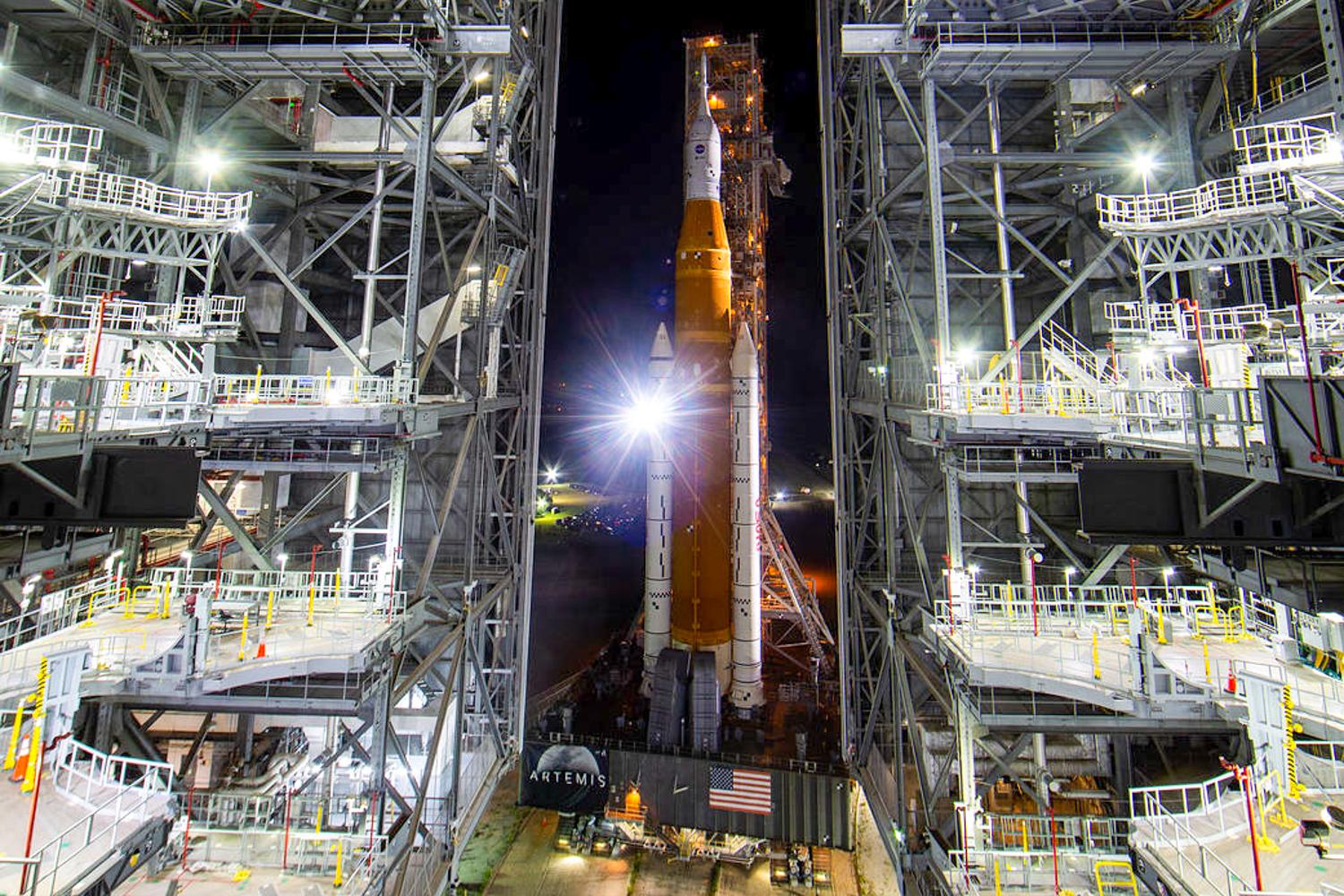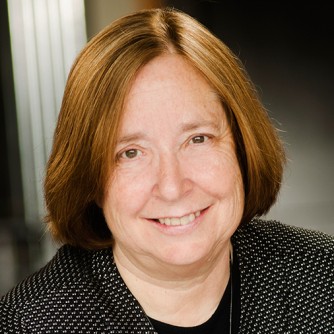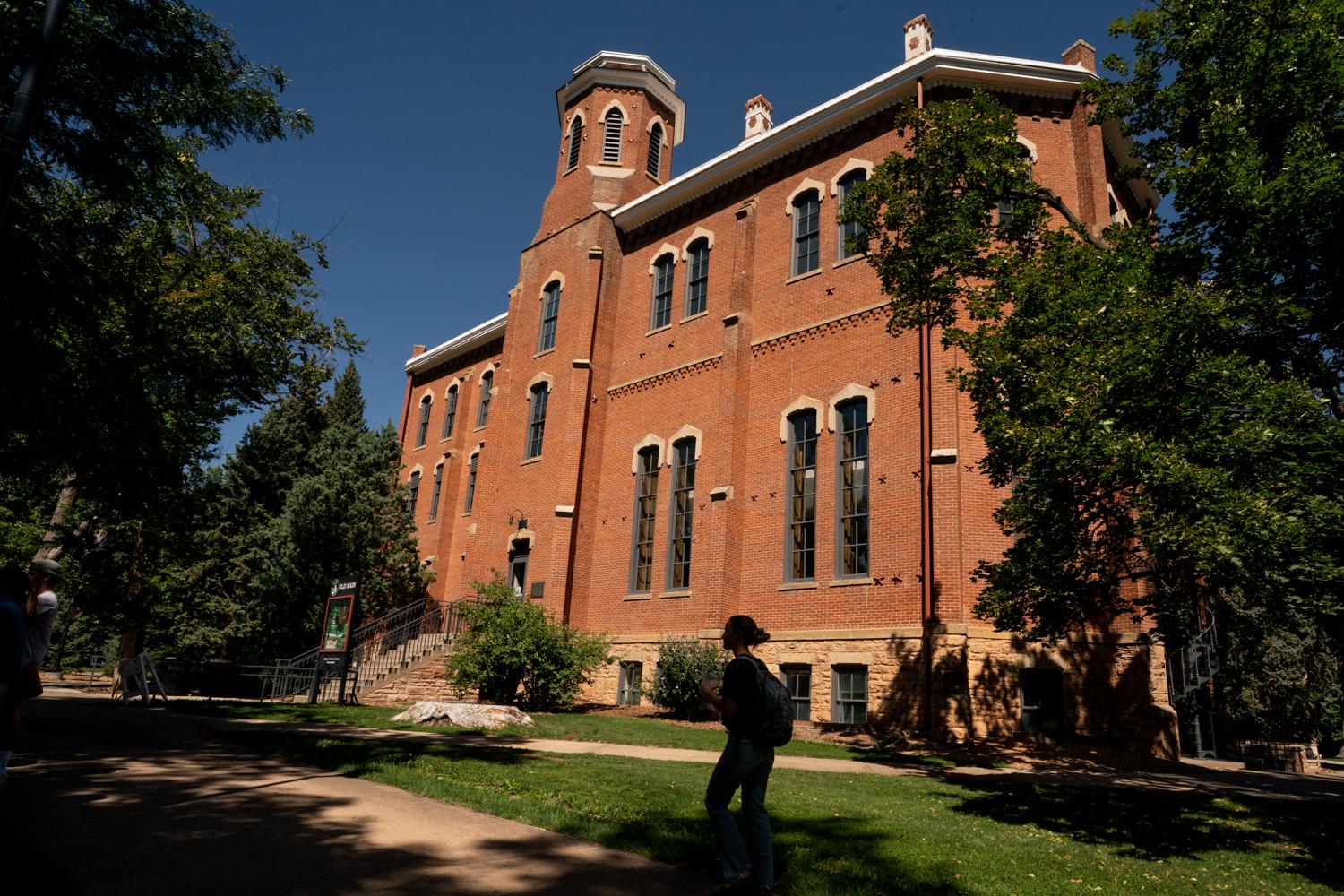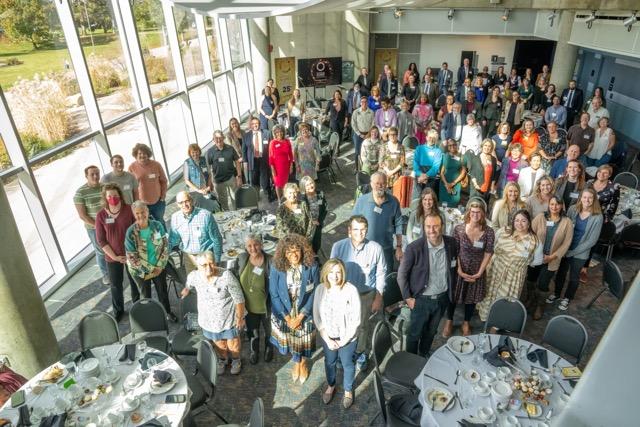
Updated at 7:20 a.m.
The United States’ first trip to the moon since 1972 was postponed Monday after NASA engineers discovered a problem with its Space Launch System rocket.
NASA scrubbed the launch 40 minutes before it was due to begin. The space agency said there was a problem getting one of the rocket’s engines chilled to the correct temperature, likely stemming from a liquid hydrogen leak. That problem also came up during an earlier test run in June.
A new date for the launch has not been announced, but the earliest possible window is Friday. Both the rocket and the Orion spacecraft were undamaged, the agency said.
If everything goes as planned, America will start a new space age at 6:33 a.m. Colorado time Monday. That’s when NASA’s Artemis 1 mission is scheduled to head toward the moon and then 40,000 miles further into deep space on a six-week voyage.
It’s the farthest any spacecraft capable of carrying humans has ever ventured beyond Earth. The mission is the first step toward NASA’s plan to build a permanent base on the moon and use it as a waystation for eventual missions to Mars.
At the heart of Artemis is Orion, a spacecraft built in Colorado by Lockheed Martin. It will fly empty on Monday but carry astronauts on future trips. Lockheed engineering manager Heather McKay will be among those watching the launch at the Kennedy Space Center in Florida. She spoke with Colorado Matters host Ryan Warner.
Ryan Warner: Heather, welcome to the program.
Heather McKay: Thanks for having me.
Warner: Where are you going to be on Monday?
McKay: I'll be at the Kennedy Space Center, on the Causeway. I'm traveling down there Saturday with my family — my husband and my two kids, Miles and Bridget, along with 750,000 other people. This is a really historic event for the history of human space flight, taking this next step as we return to the moon.
Warner: They expect 750,000 people to gather in Florida to watch the launch, correct?
McKay: Correct. It’s just going to be really exciting and I'm sure we'll be really proud to see our fingerprints go into deep space for this test.
Warner: Has there ever been as high-stakes a launch as this for you?
McKay: For me personally? Yes. The world hasn't seen something like this in over 50 years since we went to the moon with the Apollo program.
This is Artemis and in Greek mythology, Artemis is the twin sister of Apollo, which is interesting because the plan through the Artemis mission is to take the first woman and the first person of color to the moon to build a sustained lunar habitat so we can learn how to live and work in deep space and ultimately use that knowledge to leave the first footprints in the red dust of Mars.
Warner: The red dust of Mars. This is the biggest rocket ever, isn’t it?
McKay: It's the most powerful rocket. Artemis one will use NASA's Space Launch Systems. It has 8.8 million pounds of thrust. Sitting on top of it will be this Orion spacecraft developed by Lockheed Martin, the only spacecraft designed to carry humans to deep space and return them safely back to Earth. It’s an orbital flight test, uncrewed. It will travel 280,000 miles from Earth, a thousand times further than the space station, further than any human-rated spacecraft has ever gone before, before returning at 24,000 miles an hour, splashing into the Pacific ocean. It's about a six-week mission.
Warner: It is capable of carrying people. It will not this time. This is a bit of a test.
McKay: Right. We want to test all the Orion systems in the deep space environment. We’ll be looking at the crew life support systems, the avionics (flight computers), how we do deep space navigation and control in this deep space environment to prepare for Artemis 2, currently scheduled to launch in 2024. That will take humans on a flight test around the moon as well.
Warner: So with Artemis 1 you're actually going a bit beyond the moon, to be clear.
McKay: 40,000 miles.
Warner: And Orion then is reusable, so it's the same craft that will be launched in further Artemis missions as well?
McKay: Right. So Lockheed is working to reduce the cost and be able to launch multiple Orion spacecraft. There are five currently in the works and they'll be reused on multiple missions. That’s one way to reduce cost. It's like a car. You take off some parts, you refurbish them and put them back on and we launch again,
Warner: Like a car, maybe a little more complicated. Have you been inside? What does it feel like to be in Orion for those future missions that we'll see?
McKay: I have not been inside. I’ve been there when we're putting it together. It’s about the size of a college dorm room. When I talk to my kids I (say) ‘imagine being in a college dorm room that can take four astronauts, so with three of your best friends traveling for six weeks to the moon or six months to go to Mars.’”
One thing we talk about is how you have to bring everything with you. You can't stop in deep space and pick up a Slurpee, you’ve got to take it all with you. And just what a great adventure that would be and coming back to tell the world about it.
Warner: To be clear, Orion does not ever land on the moon. It's an orbiter. And then you would shuttle to the (base on the) moon, correct?
McKay: That's correct. It takes us to the lunar vicinity and then a lander would go down to the surface.
Warner: What would you imagine humanity learning from a moon base that would allow it then to go to the red planet?
McKay: We're so far away from Earth so we can't be Earth reliant. There’s all kinds of hazards — radiation and extreme temperatures that we have to make sure our spacecraft and the humans can survive.
There’s also really interesting science that we can do along the way. During these missions we're going to land on the lunar south pole and there are craters there from when the universe and the solar system was first formed. They haven't seen light in over a billion years. So NASA scientists want to get some of these core samples where they dig into the ground and bring those back to study on Earth (to) figure out how the universe was formed, look for the building blocks of life.
Warner: So it’s a means to an end, certainly with Mars, but it is also its own lesson to be on the moon and to be in different places than we've been on the moon. These missions are $4.1 billion a piece with the idea that Artemis keeps going. What is it, one mission a year?
McKay: The goal is to launch it once or maybe even more than once per year.
Warner: Okay, $4.1 billion apiece. Is it worth it?
McKay: First of all, there are definitely things that we are doing to reduce the costs not only on the NASA side but on the Lockheed side, working to reuse the spacecraft, using things like augmented reality, using more 3D printed parts. The goal is less than $2 billion per mission, ultimately less. It's hard to put a price on Artemis 1 because the mission and the development costs are so tied together but for these future missions, NASA's goal is less than $2 billion.
You talk about is it worth it? Yeah. I mean not only do we get to understand the secrets of the universe but there are so many things that help us improve life here on Earth — advanced technological discovery, job growth, economic development. There are companies in all 50 states, over 2,900 small businesses and suppliers, that are working on this. And ultimately it inspires the next generation of scientists and explorers, the Artemis generation.
Warner: You talked about augmented reality. How does that play into this?
McKay: Our manufacturing team uses that quite a bit. It’s a way to more quickly visualize what's happening on the spacecraft and it's been able to reduce manufacturing times by as much as 85 percent.
Warner: So you basically play out scenarios virtually to help with the engineering?
McKay: Right. Before you put the spacecraft together you can see a visual representation of it in your glasses to see where parts should go and how they fit together and what challenges you might come into putting the spacecraft together.
Warner: Do I have it right that Alexa is going to be aboard this mission?
McKay: Yes, there are over 10 scientific payloads flying on the Artemis mission, and one is called Callisto. It’s a partnership with Lockheed Martin, Amazon and Cisco. And it's a space-rated Amazon Alexa, designed to see how this technology could be used with astronauts to communicate with the spacecraft.
If you have an Alexa at home, you can say, ‘Alexa, take me to the moon’ and she'll give you mission updates as we go.
Warner: Is there any part of you that wishes you were up there?
McKay: I definitely think it would be wonderful to be aboard and see the views, see Earth in the distance and the stars, but I’m very happy on the ground making the spacecraft.
Warner: You grew up in Colorado. You are from Littleton, which is actually where you work on the Lockheed campus. How did you get interested in space and science?
McKay: My mom worked at Lockheed Martin and I went to Take Your Kid to Work Day and I met former astronaut Bruce McCandless and I heard him talking about being in space and that's what made me decide to become an engineer. I went to the School of Mines and studied mechanical engineering and systems engineering and then went to work at Lockheed.
Warner: So that Take Your Kid to Work Day really was a transformational moment.
McKay: Absolutely. I always loved doing math and science and those kinds of things but that was what cemented in my mind (that) I wanted to do engineering for a career.
Warner: What do you tell your own kids what you do for a living?
McKay: Miles and Bridget are 6 and 3 so building spacecraft – I've always done that. We go outside, they're the first to look up and find the moon and so we talk about what it would be like on one of these missions. We talk about the great adventure.
They’re really dreamers and I feel like as we grow up and become adults sometimes we kind of forget about dreaming. We forget to look up and see the moon. I feel like that's what the Artemis generation is about, the Artemis program, defining this generation in this next great step in human exploration, in deep space.
Warner: How big a presence is being imagined on the moon?
McKay: I think we start out small. We have to learn how we can make all the things we need, so there's talk about mining the lunar regolith, in situ resource utilization. How do we use that to make fuel and make oxygen and make all the things that we need?
Warner: What was that word you used, regolith?
McKay: Regolith. Yes. That’s the lunar soil. It has some really unique characteristics and features.
Warner: And this is all the idea that because fuel is heavy and expensive, you can't bring everything with you. You're going to have to make some stuff on the moon.
McKay: Right. Think of it as kind of a camping expedition to put it into perspective for, you know, how big and the kind of things you're doing and and learning as you go along the way and exploring.
Warner: To the Mars end of this, that is a much longer, more time-intensive proposition. Talk about the difference between the moonshot and the Mars shot scientifically.
McKay: Sure. We can talk about what we've done so far in deep space. We have been on 135 shuttle flights building the space station, living and working in space for 20 years. But that's just six hours to get back to Earth, going to the moon is a thousand times further than that.
It takes a few days to a week to get to the moon, then it takes between six and nine months to get to Mars, so it's an order of magnitude further. And, again, bringing everything with you, being able to prepare for any type of emergency you might have along the way. There’s a long delay in communications. We can't use GPS like we rely on here on Earth. We have these punishing environments and radiation and all those things, so those are some of the challenges we want to work on at the moon so that we feel confident going to Mars.
Warner: What are you blue skying for future Artemis missions?
McKay: We work with NASA, so what is their mission objective and what can we do to modify the spacecraft to do those kinds of things: What are the different payloads that we need to bring and what is the science and how do we bring that back?
One of the things we've talked about with these core samples is how do we add a freezer to the spacecraft so that we can bring those back. We're going to put it in the lockers where the astronauts have their clothes and food – after you've used that you put this freezer in and bring it back.
Warner: Every square inch, probably every square centimeter, has to be planned out and is incredibly valuable. So the question of what goes where and whether there's room and how light it can be. Those all feel so important.
Heather, this has been fascinating. I'm not sure what you say in the space world, but break a leg on Monday.
McKay: Thanks so much.








